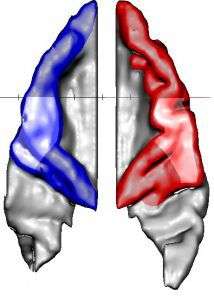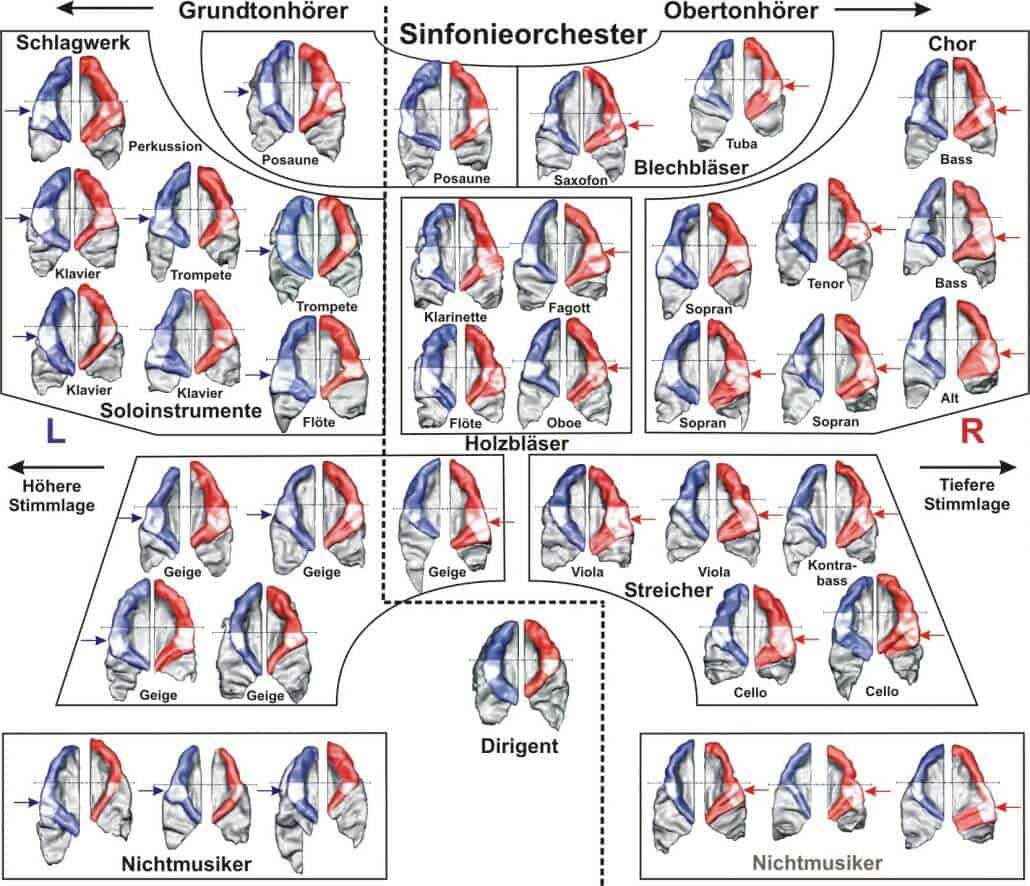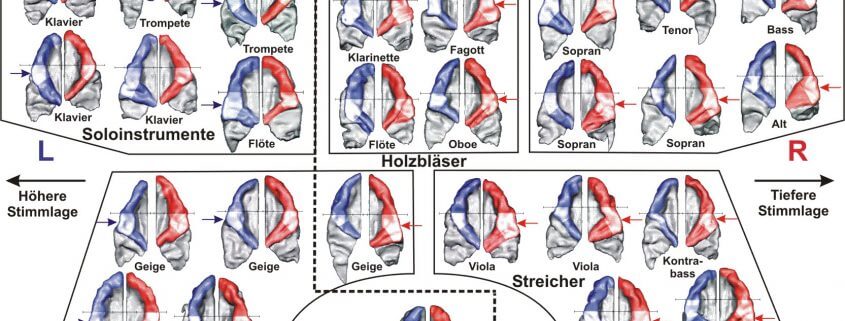Tag Archive for: hearing
Do You Hear a Melody or Syllables? Saus’ Hearing Test.
/1 Comment/in Choral Phonetics, Overtone Singing/by Wolfgang SausIn this video you will learn how to hear harmonics in vowels. This will open up a new dimension of sound perception to you. This way of hearing is rare on the fly, but it can be learned and is a prerequisite for understanding and learning choral phonetics. And it makes learning overtone singing easy and fast.
Do You Hear Syllables or a Melody?
After this video, your hearing is immediately changed, and that irreversibly. It is like a picture puzzle: once you have seen both sides, you will always see them. After the video, you are always able to hear harmonics in sounds. As soon as you have perceived both syllables and overtones, you can decide what you want to hear. And if you focus on harmonics for the next 3 weeks from today, your overtone hearing will become an integral part of your sound perception. Your brain will form new synapses.
Side Effects
You’ll be surprised what additional changes come after that:
- You will hear more empathically, understand better how other people feel, just by hearing their voice.
- When you sing in a choir, you will perceive intonation quite differently and unconsciously find a resonance with other voices.
- Many also report that they perceive colors and scents more intensely afterwards.
- You will notice a more conscious access to resonance in your voice.
If you immediately heard the melody in the first example, then you already were an overtone listener. Then the video will help you understand and become aware that you hear differently than 95% of the people around you.
But I Never Sang a Melody
One of the most exciting things about overtone listening for me is: In the end, everyone has heard the melody once, right? – but I never sang a melody! In all the singing examples, all the pitch frequencies are unchanged. I have not changed a single pitch. So in the classical sense I did not sing a melody. I only changed resonances and thus volume ratios, so in the classical sense I sang syllables on a single note, which is what most people heard at the beginning.
Despite Contradiction Everybody is Right
So if someone thought at the beginning that there was no melody, he was right, even when the melody became obvious to everyone. And everyone who hears a melody is also right. One would have to define melody independently of the tone pitch.
Many years ago, after I found out that others do not hear the same as I do, I had sent a sound file of the first example to various experts. But nobody found a melody, not even with the most modern methods of analysis. Why not? Because apparently no one thought to look for a melody. However, after hearing the melody, one finds it in the sound spectrum. But only as a volume pattern, not as a pitch change. Isn’t that exciting?
Personally, I have learned from this to approach perceptions of other people with less prejudice, especially people from the spiritual realm, who I might have dismissed as unscientific in the past. Leaving paradigms behind is probably part of the coming zeitgeist in many ways.
Find more information about the test as well as an audio version for download in my blogpost “A Melody Only Some Can Hear – Take the Hearing Test”.
Video Content
00:00 The magic of listening
00:21 Brain and sound processing
01:31 Melody hidden in syllables
01:50 Hearing test part 1 – 5% hear the melody
02:05 The melody revealed
02:58 Why some sounds remain hidden
04:02 Hearing test part 2 – 20% hear the melody
04:52 Hearing test part 3 – 40-60% hear the melody
05:20 Hearing test part 4 – 100% hear the melody
06:27 Steps to discover the melody
06:54 Step 1 – Overtone singing technique
07:03 Step 2 – Vowels between u and i
07:16 Step 3 – Consonant n
07:24 Step 4 – Consonants n and t
07:56 Step 5 – other consonants
08:32 Step 6 – Intermediate step consonant transitions
09:20 Trust your perception
09:56 Step 7 – back to syllables
10:18 Step 8 – your hearing has now been changed
Video Transcription
The most important thing in overtone singing is listening. It turns out that not everyone hears the overtones spontaneously. These are studies from the early 2000s in Heidelberg at the University Clinic, which showed that it depends on which part of the brain processes the sound. There is an auditory center on the right side that hears harmonics, and there is an auditory center on the left side that is responsible for the mathematical part of music, that is, intervals and melodies and rhythm and things like that. On the right hemisphere the timbre is analyzed, but that also includes the information of the overtones, which are usually not heard separately. And then there is an interpretation of sound as language. That happens on the left side in the Broca and Wernicke centers, which are both located on the left side. And now it’s important that when you sing overtones, that you hear the overtones. That means that you have to activate the right side, the right auditory cortex. For that, I have a test that you can use first to check where you stand, and at the end, there’s a systematic guide to the perception on the right hemisphere. So when this video is over, you’ll hear completely differently if you don’t already heared the overtones right from the first example. Now I’ll sing a meaningless sequence of syllables, and I’ll sing them on a single note, that means I won’t change any pitch, yet there’s a melody in these syllables, and I’ll hide this melody in the resonances of the vowels. Let’s see if you can hear that.
So, that was a very well-known melody from the classical period. As a little hint: It was composed in Bonn and I don’t want to hide it at all. The point is to learn to listen to it, it’s not about showing now what you can’t do, but just the opposite. It was “Joy, Beautiful Sparks of the Gods” in this register.
Typically, only 5% of people hear this melody spontaneously. If you now know what to listen for, you may now already have a little inkling of the melody or even hear it clearly. For those who don’t hear the melody now, this has nothing to do with musicality, but only with the preference on which side your brain processes this sound. There is usually a block when the left brain decides that this is speech, but it doesn’t understand a word. Then it tells the rest of the brain: Shut up, I need all the attention. And language is very dominant in our brain. That’s why this side, here the speech center, is apparently particularly active in most people. But now I would like to change this filter that says important and unimportant, language is important, timbre and overtones are unimportant. I would like to turn that around. And I do that by systematically removing information in the sound for the left side, for the speech center. I do this step by step in such a way that you will recognize at which point this flips over. At the end, you will definitely hear the melody.
Now I’ve only used Ü sounds like that, and that means in the phonetic vowel triangle I’ve only gone along vowels where the second formant, as they used to call it, or I call it “second resonant frequency”, changes. I left out all the frequencies that move in the direction of the vowel A, that would change the first resonance. So now usually there’s about 20% of the people who perceive the melody now. For the rest, I go one step further and leave out the consonants. Now usually about 40 to 60 % of the people are with me and hear this melody. If you don’t hear it yet, I go one step further.
Now everyone should have heard the melody. Who now does not hear the melody, as a whistling melody, then I unfortunately can not help. But I have never experienced that someone has not heard the melody. It can only be that one hears in such a way that it does not belong to the voice. Most people hear it as a whistling melody. And there it is separated in the brain, one then hears two separate melodies, respectively one hears a humming tone and in addition a whistling melody. For some people, this whistling melody can no longer be assigned to the voice, while others can associate this whistling tone with the voice. The main thing is that you hear this melody now.
If it has disappeared now, go back to that example where the consonants weren’t there yet, or where the consonant was N. I can fine-tune that again by replacing the T-sound with a D-sound. You’ll notices here, the more sibilants are added, the more this melody now moves into the background of awareness, and the speech center pushes itself into the foreground. But the melody is still there. Particularly interesting is the transition where you’re no longer sure, is it just my imagination, because I know what I’m supposed to hear, or did I actually hear that? And that’s a very interesting transition, because that’s where the conscious mind decides whether it trusts the right hemisphere of the brain. It’s a trust thing. You know that I’m singing the melody, so you can trust me. If you don’t trust me, then trust your own perception. If you mistrust it, then yes, you don’t know. But still the melody is there. I know that I am singing it. Next step.
Now I have added a little bit of movement into the first resonance again. And now I take a little bit more movement into it, and then I’m back at the beginning, which I started with.
And I hope that now most of you have come along up to that point. But if you have lost the melody two or three examples earlyer then it’s still perfect, then the right hemisphere is now activated. And this is an essential foundation to learn to sing harmonics.
Aachen Cathedral Bells, Full Ringing
/0 Comments/in Outside the box/by Wolfgang SausThe full ringing of Aachen Cathedral, recorded on Christmas Eve at midnight.
Nice to see in the spectrogram how some tones develop only after the beat. And not always the loudest ones are also the perceived ones.
Mary’s Bell: strike tone g°+8, 2075 mm diameter and 5,800 kg.
Charlemagne Bell: strike tone h°+7, 1628 mm diameter and 2700 kg.
Joh. evangelist: strike tone d’+8, 1367 mm diameter and 1650 kg.
Joh. Baptist: strike tone e’+7, 1367 mm diameter and 1150 kg.
Leopardus bell: strike tone fis’+3, 1078 mm diameter and 800 kg.
Stephanus bell: strike tone g’+8, 1027 mm diameter and 700 kg.
Petrus bell: strike tone a’+1, 894 mm diameter and 450 kg.
Simeon’s bell: strike tone h’+8, 793 mm diameter and 300 kg.
The Mary’s Bell was melted down by the Nazis and re-cast in 1958. The bell motif is formed by the Latin hymn Veni Creator Spiritus.
After many years, I finally succeeded in 2017 to get a largely trouble-free recording. I recorded it from Katschhof, the place between the cathedral and the town hall and this time recorded it with wind-protected hypercardioid microphones on a high stand behind two lonely Christmas market stalls, and one hour before I visited all the security people (who guard the empty Christmas market stalls), discussed the recording and – important! – I showed them a place from where they could watch me without disturbing the recording too much.
For years there were always disturbances, unfortunately also with the acoustically most beautiful 3D recordings with OKM original head microphones 2014. Sometimes it stormed, sometimes it rained, sometimes the police drove over the Katschhof, sometimes a blower blew into a plastic print, or security people asked questions, or someone poked loudly with high heels into the Christmas mass. In 2017, hypercardioid microphones with windscreens largely blanked out the sounds of space and the wind.
I moved away from Aachen in 2018 and am happy to have this recording in my box. It gives feelings of home. For me, the cathedral is the most impressive thing in Aachen.
Software: Overtone Analyzer/VoceVista
Can you hear the melody? – Take the Hearing Test
/37 Comments/in Music & medicine/by Wolfgang SausIn just 3:20 minutes, this listening test opens your ears to a new dimension of hearing that only around 5% of musicians are aware of: overtone listening. This ability is essential for learning overtone singing. And it is a prerequisite for the practical realisation of vocal and choral phonetics.
New Videos
In 2004, a research group led by Dr Peter Schneider at Heidelberg University Hospital discovered that people perceive sounds differently depending on which hemisphere of the brain is responsible for processing the sound. They developed the Heidelberg Hearing Test to find out whether someone tends to perceive fundamental tones or overtones in a sound. →You can take the Heidelberg test here
My hearing test is different. It tests whether someone is more likely to recognise vowels or overtones in a sound. In the second part, it teaches you to shift the threshold between vowel and overtone perception in favour of the overtones.
Saus’ Hearing Test
Relax and listen to the first sound example. I am singing a series of meaningless syllables on a single note. If you recognise a well-known classical melody in it, then congratulations, you have a pronounced overtone hearing and are one of the 5% of people who have this perception spontaneously.
Sound example 1
If you can’t hear the melody, don’t worry. At the end of the listening test you will hear the overtones.
In the next sound examples, I remove more and more sound information from the voice, which the brain interprets as part of speech. Next, I sing the syllables by changing only the 2nd vowel formant. I keep the first one unmoved in a low register. The syllables then only contain Ü sounds, the melody now becomes clearer for some.
Sound example 2
If the melody is now clear, congratulations. At this point 20-30% hear the melody. But maybe you only sense the melody and don’t know whether you are imagining it. Trust your imagination. After all, your hearing picks up the melody, but a filter in your consciousness tells you that the information is not important. Speech recognition is much more important.
I want to reveal the melody at this point: It is “Ode to Joy” from the 9th Symphony by Ludwig van Beethoven. In the next sound example, I whistle it tonelessly. This will help your brain learn what to listen for. Afterwards, listen to sound example 2 again.
Sound sample 3
Is it easier now? If not, listen to the next example.
In sound example 4, I leave out the consonants. Now Broca’s centre, the brain region for speech recognition, has nothing more to do and passes the auditory attention on to other regions.
Sound example 4
Now about 60-80% are on board. If you can’t hear the melody here, you are probably categorised as a fundamental listener in the Heidelberg hearing test. This has nothing to do with musicality. You are in the company of some of the best flutists, drummers and pianists.
In the next example, I completely defamiliarise the sound. I lower the third formant by 2 octaves with a special tongue position until it reaches the same frequency as the second. This creates a double resonance that does not occur in the German language.
Sound example 5
The technique is called overtone singing. The ear now lacks information from the usual vocal sound and individual partials become so loud due to the double resonance that the brain separates the sounds and informs your consciousness that these are two separate tones.
You will probably now hear a flute-like melody and the voice. Overtone singing is an acoustic illusion. In fact, you are hearing more than 70 partials. Physical reality and perception rarely coincide.
In the last sound example, I go all the way back to the beginning. Try to keep your focus on the melody the whole time. Listen to sound example 6 more often, it trains your overtone hearing and makes you more aware of the sound details.
Sound sample 6
Our reality is created within ourselves. And it can be changed.
Your ears have super powers – convince yourself
/0 Comments/in Outside the box/by Wolfgang SausYou already have super-power in your eard, which you where not aware of. Steve Mould demonstrates in this video that you can hear without exercising, whether water is cold or warm. Test it yourself.
The reason is that you are already familiar with the sound of pouring water and have stored the information somewhere in your brain. This information is automatically retrieved if you hear the process but do not see it.
Hot water has a lower viscosity than cold. The blubber noise in warm water is slightly higher on average due to its lower viscosity. Our fine hearing sensors are clearly aware of this difference.
You can find more information here:
Test Your Rhythm Feeling
/0 Comments/in Music & medicine/by Wolfgang SausOn ConcertHotels you will find a test that measures your precision of rhythm feeling. Take the test first. Then try singing overtones while you’re doing the test and write your results in the comment below if you like. I look forward to it.

Enlarged right auditory cortex, Wolfgang Saus.
Overtones are usually sung slowly and meditatively, rarely fast and rhythmically (there are exceptions). Overtone singers process sound more in the right hemisphere, drummers more in the left, says Dr. Schneider from Heidelberg University Hospital. Test here how your brain processes sounds.
Is that one of the reasons? An interesting question that has not yet been examined. I suspect that focusing on overtones, at least for the untrained, draws attention away from rhythm.
In my advanced courses, I experience that at first the intonation and sound quality of the keynote suffers when the focus goes entirely to the overtones. Conversely, concentrating on the keynote causes a poorer overtone quality or even complete loss of control of overtone singing. I can immediately recognize from the sound what a student is concentrating on.
If you want to sing polyphonic overtones, i. e. a fundamental melody and an independent overtone melody at the same time, then both tones must receive equal attention. I have developed special exercises for this purpose, which improve the clean control of both notes after a few hours. It would be interesting to examine whether these exercises have an effect on the feeling of rhythm. I will do the rhythm test in my courses as a before-and-after comparison. I’m curious to see what happens.
What are your experiences with rhythm and overtones?
Test: Are you an overtone or fundamental listener?
/176 Comments/in Music & medicine/by Wolfgang SausDo now also the new hearing test by Wolfgang Saus!
The effect of overtones in the brain seems to be of great interest. That’s why I would like to introduce the corresponding hearing test here. Dr. Schneider, the head of the study, provides on his website a hearing test developed by him, with which I have been testing my Masterclass students for years in order to develop an individual and optimal learning strategy for everyone.
This short test plays a series of tone pairs in which you are asked to decide spontaneously whether the second sound feels higher or lower than the first. At the end you get an evaluation of the degree to which you are fundamental or overtone listener, i. e. whether your hearing processes the sound more in the left brain half (fundamental listener) or more in the right brain half (overtone listener). If you are interested in the background of the work of the Heidelberg researchers, you can download the specialist article here.
On some computers this alternative link seems to work better:
Feel free to leave your score below in the comments. I’m curious to see how overtone singers perform. I’ll let you know my result as soon as the first comments come in. Then in another post I’ll show you what’s behind the sounds of the test.
Sources & Links
How Your Brain Handles Overtones
/0 Comments/in Music & medicine/by Wolfgang SausWhy One Plays Violin and the Other Cello
First published at Universitätsklinikum Heidelberg on 21.08.2005 (Repost with kind permission)
The ability to perceive fundamental and overtones is anchored in the brain / Scientists from Heidelberg publish a study of orchestral musicians in “Nature Neuroscience”
→ Here you can do the Heidelberg listening test yourself
The same sounds can be perceived very differently by different people. The cause resides in the brain. Because the sound of a tone depends on structures in the cerebrum: Those who hear more overtones and thus rather long-lasting, deep sounds have more neuronal cell substance in the hearing centre of the right cerebral cortex, the so-called Heschl’s gyrus (transverse temporal gyrus). Those who hear the root more strongly or prefer short, sharp tones show this characteristic in the left half of the brain.
These are the results of a study published on August 21, 2005 as an online publication of “Nature Neurosciences” and in the September print edition . Scientists from the Department of Biomagnetism at the Neurological University Hospital in Heidelberg, together with colleagues from the Universities of Liverpool, Southampton and Maastricht, examined a total of 420 people, the majority of whom were music students and orchestra musicians.
Musicality independent of hearing type / connection with rhythm recognition
Extensive listening tests were used to determine whether the test persons belonged to the group of “fundamental listeners” or “overtone listeners“. (For each natural tone, a multitude of higher tones are produced in addition to the fundamental tone, which determines the pitch. These overtones complement the frequency spectrum of a tone and give it its individual timbre.) In 87 subjects from both groups, additional brain structures were visualized in the magnetic resonance tomogram and their functions were measured with magnetoencephalography (MEG). MEG is a very sensitive method for measuring brain activity. It measures low magnetic fields generated by active nerve cells in the cerebral cortex.

Overtone and fundamental pitch listeners in the orchestra (c) Neurological University Hospital Heidelberg
The Heidelberg study has shown that the seating arrangement in a modern symphony orchestra follows the individual ability of sound perception, which is anchored in the left or right hemisphere of the brain. Fundamental listeners with high instruments (e.g. violin, flute, trumpet) are located to the left of the conductor and overtone listeners (e.g. viola, cello, double bass, bassoon, tuba) to the right. Image source: Neurological University Hospital Heidelberg
“These two types of hearing also exist among non-musical people,” explains Dr. Peter Schneider, physicist, church musician and MEG specialist in the Heidelberg research group. However, the processing of music is also linked to the ability to hear the fundamental or overtones.
“Overtone listeners can perceive long-lasting sounds and tones better,” says Schneider. This ability is located in the right hearing center. The fundamental listeners, on the other hand, stood out due to a more virtuoso playing technique and better processing of complex rhythms, which is linked to the faster processing in the left hearing centre.
Singers and cellists are “overtone listeners”.
Orchestral musicians have also selected their musical instrument according to their listening type, according to another study recently presented by Dr. Schneider at a specialist congress. Fundamental listeners prefer drums, guitar, piano or high melodic instruments, overtone listeners prefer deep melodic instruments such as cello, bassoon or tuba. Singers also belong to this group.
Musicality has nothing to do with the types of hearing, but it can also be found in the brain structures. In a publication in August 2002, again in “Nature Neuroscience”, Dr. Schneider and his colleagues from Heidelberg have already discovered that professional musicians have more than twice as much brain mass in the primary hearing centre as non-musical people. In addition, as MEG measurements have shown, their brains react more strongly to sounds.
For further information please contact:
Dr. Peter Schneider
E-mail: [email protected]
Further information on the Internet:
www.idw-online.de/pages/de/news51506
www.klinikum.uni-heidelberg.de/index.php?id=5503
Image source: Neurological University Hospital Heidelberg
Sources
Tag Archive for: hearing
Nothing Found
Sorry, no posts matched your criteria
Upcoming Events
- There are no upcoming events.
Latest News
 Overtone Slider and Other Teaching Material1. April 2020 - 21:31
Overtone Slider and Other Teaching Material1. April 2020 - 21:31
 Of Overtones and Love Messages: How a Video Redefines the Boundaries of Vocal Control14. February 2024 - 14:02
Of Overtones and Love Messages: How a Video Redefines the Boundaries of Vocal Control14. February 2024 - 14:02 How Overtones Harmonize Your Brain27. January 2024 - 23:30
How Overtones Harmonize Your Brain27. January 2024 - 23:30
Wolfgang Saus
Hirschbach 1
91602 Dürrwangen
Deutschland
Tel.: +49 163 6237866
[email protected]





Recent Comment